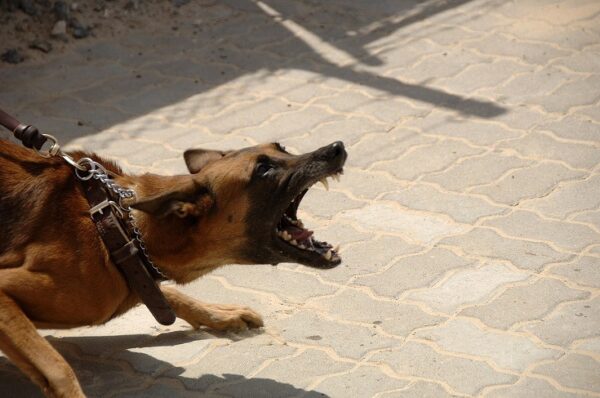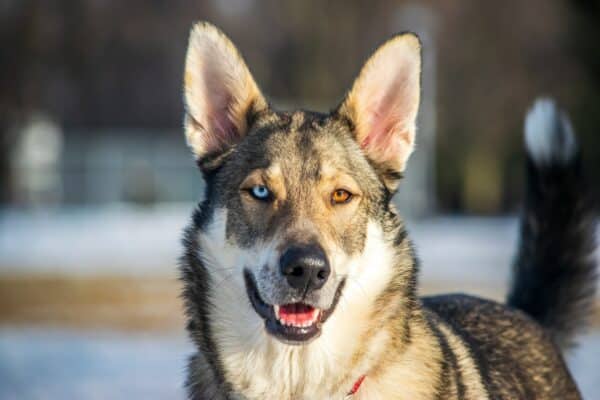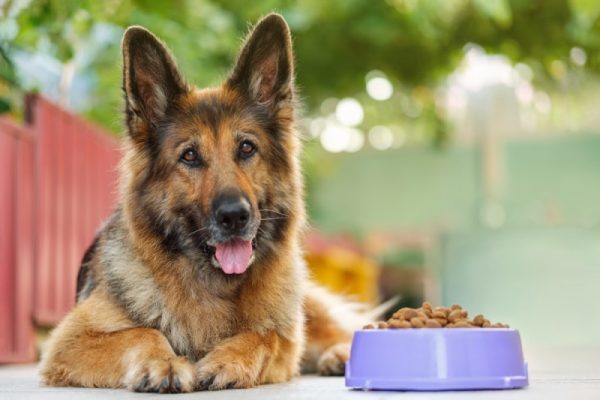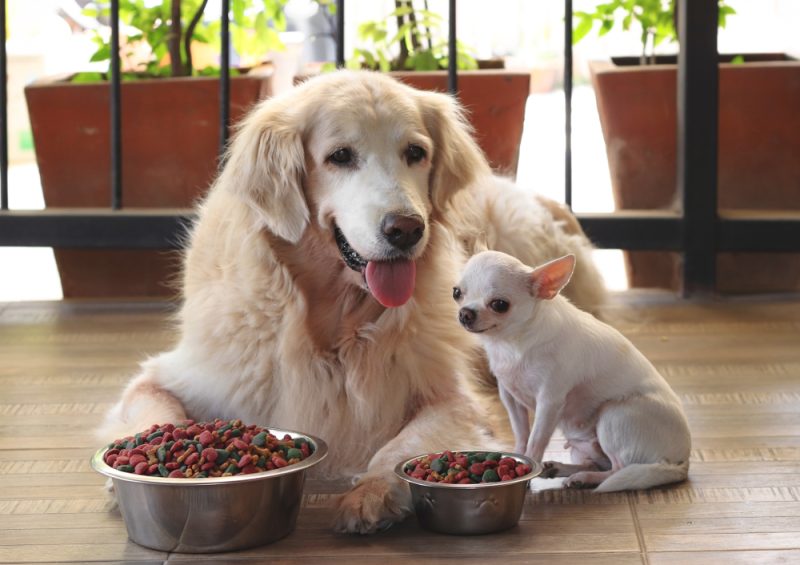We can think of a thousand and one reasons we love our dogs, but their smell is one aspect that could often use some improvement. Dogs have a habit of developing interesting odors, some from the environment and others due to bodily issues. No matter the cause, an off-putting doggy odor can understandably make you scramble for a solution.
While smart habits like monthly baths can prevent many common issues, rooting out the cause will reveal the most effective treatments for lasting odor control.

The 7 Possible Reasons Your Dog Smells So Bad
1. Skin Infections

Bacterial and fungal infections can affect dogs across their bodies, often on their skin. Most skin infections are secondary to other issues though, for example allergies. Allergies cause itching and inflammation, damaging the skin and meaning that bacteria and fungi that normally live there can overgrow leading to infections. Dogs with wrinkly skin often develop infections in the warm skin folds, making them prone to nasty odors.
Yeast dermatitis (Malassezia dermatitis) is a common fungal skin infection that can cause a foul, musty odor. Infected skin may be crusty, greasy, thickened, red, and itchy. Bacterial skin Infections may also lead to an increased smell, typically alongside other signs like hair loss, scaling, and pus-filled red bumps.
Tips to Manage Dog Smells From Skin Infections:
- Since many infections are secondary to other issues, talking with your vet is a practical first step for managing your dog’s smelly skin. Frequent cleaning with dog wipes can help if your dog is prone to skin fold infections.
- Your vet will determine the best option for treating your dog’s skin infection depending on the type of infection, cause and severity. Topical treatments and medicated shampoos are often prescribed. Sometimes oral antibiotics and antifungals are needed for more severe infections. Possible underlying causes will also be investigated which may involve diet trials and blood tests.
If you need to speak with a vet but can't get to one, head over to PangoVet. It's our online service where you can talk to a vet online and get the advice you need for your dog — all at an affordable price!

2. Ear Infections
Ears are hotspots for bacterial and yeast infections that can also affect the skin. Infections may affect one or both ears and are more common in dogs with floppy or hairy ears that trap moisture and pathogens.
Waxy buildup and discharge are among the most prevalent ear infection signs, but redness, crusting, and a funky odor are also typical. You may notice your dog scratching their ear or shaking their head to relieve the pain and itchiness.
- Prevention is the best way to handle ear infections. Owners should regularly check their dog’s ears for signs of a problem and clean the ears with a vet approved ear cleaner if necessary, especially after swimming.
- Treating existing ear infections requires consulting with your vet for proper diagnosis. Depending on the cause your vet may prescribe medicated ear drops, and if ear infections are recurrent they will investigate and address any underlying issues that may be contributing. For example, allergies, ear mites, and foreign bodies like grass seeds can all lead to ear infections.
3. Seborrhea

Seborrhea is a condition that causes skin flaking and often oily or greasy skin. It is caused by a keratinization malfunction, and a problem with the production of new skin cells.
Some breeds, including Basset Hounds and Cocker Spaniels, may develop it as a primary genetic disorder, but seborrhea is more commonly secondary to other conditions like hormonal imbalances, skin allergies, parasites and skin infections.
- Your vet is the best resource for resolving primary and secondary seborrhea. They’ll often recommend a special medicated shampoo to remove dead cells and reduce scaly buildup, while antibacterial and antifungal treatments can alleviate infections.
- Identifying underlying allergies, hormonal problems, and internal diseases is crucial in eliminating secondary seborrhea. Your vet will examine your animal and consider other factors, such as diet, body condition, and abnormal behaviors, to diagnose the problem and form a treatment plan.
4. Anal Sac Issues

Dogs have two scent glands on either side of the anus that produce a smelly excretion that helps them communicate with others. These glands typically empty and excrete fluid whenever the dog defecates.
Sometimes anal glands don’t empty properly and this can lead to impaction, infection and abscesses. One of the first signs of a problem is often a distinct, strong, fishy smell. Dogs may also show signs of irritation by dragging their butts along the ground, or licking around their anus to try and get some relief.
When the glands become infected and form abscesses then redness, swelling and blood or pus may be visible.
- Some dogs need their anal glands to be manually expressed regularly to prevent impaction, your vet or trained groomer can do this. If the glands become infected then antibiotics and anti-inflammatory medication may be required.
- Your vet may also recommend dietary adjustments to help prevent future problems such as adding extra fiber to their diet to help ensure firmer stools.
5. Gas

Gassiness is a frequent occurrence for many dogs. Some have more sensitive stomachs, while others may get into trash, table scraps, and other sickening substances that cause excessive stinky flatulence. Dogs can also get a build up of gas when they eat too fast and swallow air.
- Temporary gas from dietary indiscretion typically resolves itself as the dog passes the offending food. In these instances, preventing odors is as easy as keeping your dog from getting into the trash or eating unwanted materials around the house and outside. If your dog eats too fast you could invest in a slow-feed dog bowl or divide your dog’s daily food allowance into smaller meals to help reduce the amount of air that they swallow.
- Chronic flatulence can occur when dogs suffer from a dietary intolerance or other gastrointestinal diseases. Frequent gas should inspire a conversation with your vet, especially if it accompanies diarrhea, vomiting, lethargy, and other signs of distress. Vets may run some tests to help identify the underlying cause and may advise an elimination diet trial to help identify food intolerances or allergies.
6. Dental Hygiene
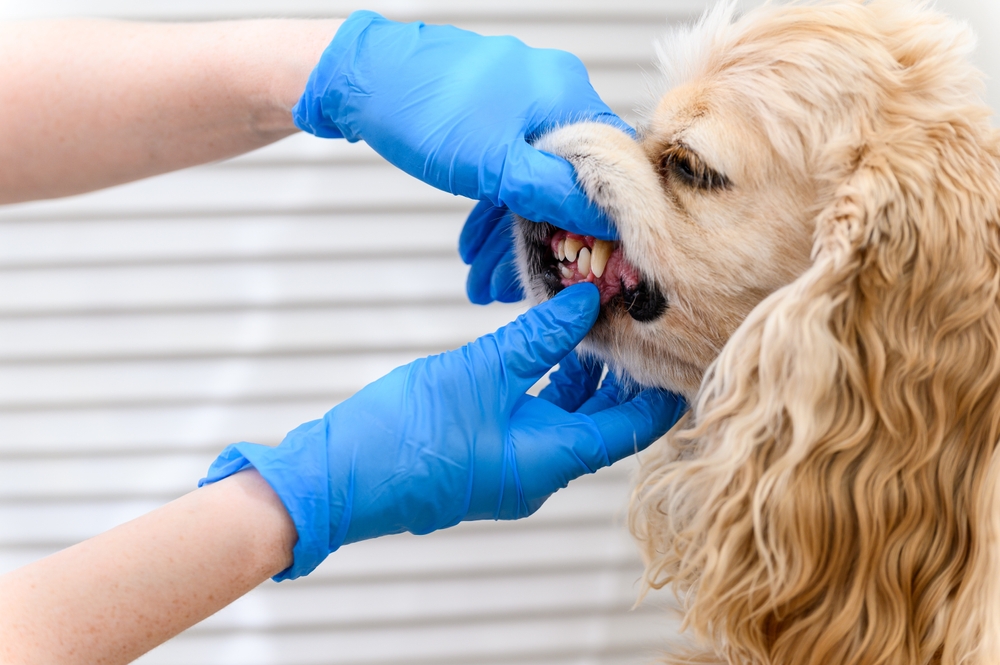
Dogs can develop bad breath from poor dental hygiene, or it may indicate a more severe underlying internal illness such as kidney disease. Periodontal gum disease affects over 80% of dogs over 3 years old.
Bacteria build up associated with the plaque and tartar, leads to infections and foul mouth odors, highlighting the need for daily toothbrushing and regular dental cleanings at the vet.
- Daily tooth brushing removes plaque and helps prevent dental disease and halitosis. If your dog is already suffering from hygiene issues, a dental cleaning and possibly tooth extractions at the vet may be required to reduce the smell and, with frequent brushing, prevent it from returning.
- Some dogs may also have underlying illnesses contributing to bad breath. Diabetes can result in sweet-smelling breath, while kidney disease could make a dog’s mouth smell of ammonia. Abnormal growths in the mouth like tumors can also become infected and smell.
- Bad breath should always be checked by a vet so the underlying cause can be diagnosed and treated appropriately.
7. Wet Dog Smells

Does your dog tend to get stinkier after walking in the rain, swimming, or playing outside on an extra-humid day? Wet dog smell is a frequent occurrence rooted in the microorganisms that are on their skin. Although these microorganisms, like yeast and bacteria, can cause infections when overgrown, even healthy dogs have them in certain numbers living on their skin naturally.
Fortunately, they’re rarely smelly when dry. When your dog gets wet, moisture mixes with the volatile compounds these microbes produce. Odors arise as the water evaporates and carries the chemicals into the air and up your nostrils.
- Keeping your pet dry is the most straightforward solution for managing a wet dog smell. After swimming, bathing, or sloshing around in the rain, give your dog a thorough towel drying down to the skin. A dog-safe blow dryer on a low setting for long-coated dogs can evenly and efficiently dry the entire body.

Tips to Keep Your Dog From Smelling Bad
Bathing and a reliable grooming routine are fundamental in preventing everyday off-putting dog odors. Washing your pet with dog-friendly shampoo and drying them thoroughly will help remove dirt, debris, excess oils, and microbes that contribute to the smell.
Dogs generally need baths about once every 1–2 months, but those who like to get dirty or become overly greasy may need it a few times monthly. Brushing weekly for short-coated dogs and once every few days for long and double-coated breeds will further promote a better-smelling pup.
Brushing removes dander, dead hair and debris which can trap odors in the coat. When grooming, check for any skin issues such as redness, rashes or unusual odors. If you notice any problems consult with your vet to get them addressed as soon as possible.

Wet Wipes
Pet wipes are a convenient way to refresh your dog’s coat at home or on the go. Rather than bathe your dog constantly, use these mildly scented sheets to wipe away surface filth, clean under folds, and manage your dog’s delicate areas to keep odor-causing compounds and bacteria from creating an overwhelming stink.
When it comes to choosing the right grooming products for cleaning your pup to prevent dog odors and avoid skin irritation, there are two products we cannot recommend highly enough. The Oatmeal Pet Shampoo from Hepper is formulated with aloe and oatmeal to soothe skin and hydrate the coat; and for a convenient on-the-go option to quickly refresh sensitive areas, Hepper's Wash Wipes will help you keep your dog clean from head to tail with moisturizing ingredients. Both products are pH-balanced and formulated with pet-friendly ingredients, free of harsh soaps, chemicals, and dyes. Give this duo a try to soothe, heal and nourish your dog's coat, and leave them with an irresistible just-left-the-spa cucumber and aloe scent.
| Image | Product | Details | |
|---|---|---|---|
For Bathing

|
Hepper Oatmeal Pet Shampoo |
|
Check Price |
For On-The-Go

|
Hepper Wash Wipes |
|
Check Price |
At Dogster, we've admired Hepper for many years, and decided to take a controlling ownership interest so that we could benefit from the outstanding designs of this cool pet company!
Diet
A healthy dog is usually a stink-free dog. To prevent gas and pungent body odor, feed your dog highly digestible food with high-quality animal proteins and limited ingredients. For dental health, you can complement frequent tooth brushing with teeth-cleaning chews to help scrape away plaque and and prevent bad breath.

Conclusion
Dogs can smell bad for a variety of reasons, from a dirty, wet or matted coat to underlying health issues like skin or anal gland infections. While some problems are relatively easy to fix with bathing and regular grooming, for other dogs the odor is a sign of a more serious issue that needs veterinary attention.
If your dog smells bad but you can’t easily identify the source of the smell, or resolve it with a bath, then contact your vet who can help you find the underlying cause and a lasting solution for a better-smelling pet.
Featured Image Credit: In Green, Shutterstock





